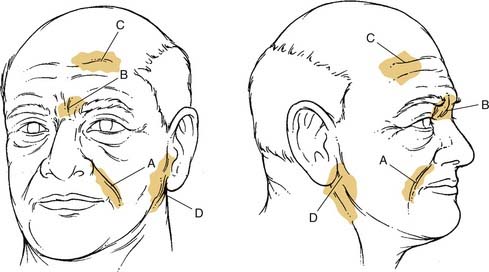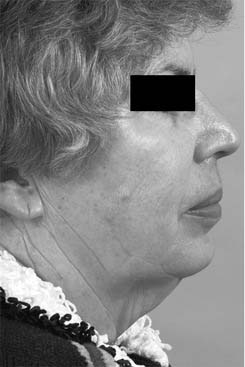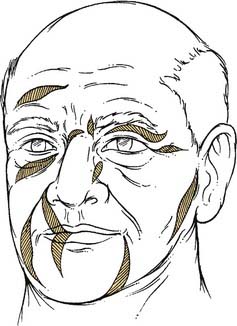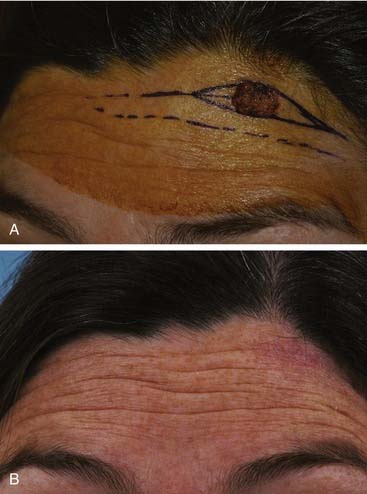CHAPTER 21 Scar Revision and Camouflage
After complete maturation and healing, an ideal scar should be flat and level with the surrounding skin, a good color match with the surrounding skin, narrow, parallel to the RSTLs (Fig. 21-1) or on the border of aesthetic facial subunits, and without straight, unbroken lines that can be easily followed with the eye (Fig. 21-2).1 Scars with aesthetically unfavorable characteristics include those that are wide or misaligned with relaxed skin tension lines or aesthetic subunits, and those that are thickened, hypertrophied, or keloid (Fig. 21-3).1 The facial plastic surgeon has many options to improve, but not eliminate, these aesthetically unfavorable scars. Successful application of various treatments requires an understanding of which techniques are best indicated when performing scar revision or treating hypertrophic and keloid scars.
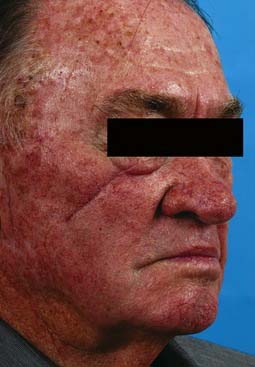
Figure 21-3. Scar on right cheek with unfavorable characteristics: depressed and not in alignment with relaxed skin tension lines.
Indications for Revision
The surgeon should first begin with a detailed analysis of the scar. Experience has shown that many scars that are narrow, well positioned along aesthetic subunit borders, or in parallel with RSTLs will continue to mature, improve, and become less noticeable over a period of 12 to 36 months.2
Excision
A cardinal principle of surgery is that the best treatment of any complication is primary prevention. For scar revision, this translates into the use of proper technique when closing any wound primarily. When presented with wounds that were not closed properly, re-excision with meticulous closure may be all that is needed. Re-excision should be done by use of fusiform shape with 30-degree angled ends positioned within RSTLs when possible (Figs. 21-4 and 21-5). A slight vertical bevel outward from the original scar will prepare the wound edges for proper everted closure. Routine undermining of 1 to 2 cm around the periphery of the wound allows reapproximation of the skin edges with minimal tension. The use of buried subcutaneous sutures further decreases wound edge tension. Final eversion of the wound edges is achieved with properly placed monofilament interrupted sutures. Vertical mattress sutures can also prove helpful when wound edge eversion needs to be maximized.
Expansion with Excision
Tissue Expansion
When treating larger scars, the best camouflage is afforded when abundant amounts of similar-appearing tissue can be brought into the repair. Tissue expansion can be a powerful tool to help create excess amounts of surrounding tissue. Tissue expanders are available in a variety of shapes and sizes. Studies on the gain of surface area afforded by the three most commonly shaped expanders have determined that rectangular expanders provide the greatest expansion at 38%, crescent-shaped expanders provide 32%, and round expanders provide only 25%.3 As a general rule, the base of an expander should be approximately 2.5 to 3 times as large as the area to be reconstructed.4
Stay updated, free articles. Join our Telegram channel

Full access? Get Clinical Tree


